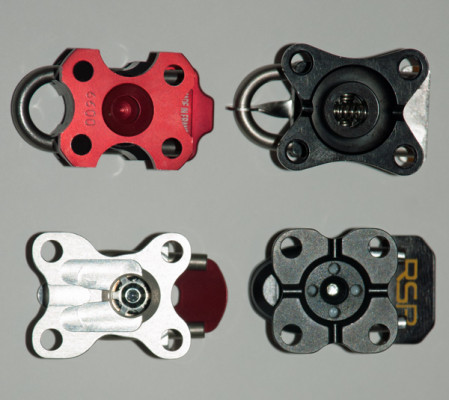5/22/2020 Staff Picks: 2019/20 Best Accessories
We all know about the basic gear it takes to access the backcountry in safety and style -- you've got to have boots, bindings, skis, and skins. Those are the basics we chat about with any customer who comes through our doors, and that set of four products is a big investment of time and decision-making. But once you've got your setup dialed in, what else do you need to keep yourself warm, dry, safe, and happy during those predawn starts and long powder-lapping days? Each member of our staff at Skimo Co has thought about this question quite a bit and picked out a suite of accessories that suits the kind of skiing and ski mountaineering that they love the best. Below, our staff’s picks for the best of "everything else" for the 2019/20 season:
Skier: Cole Panter // Sales staff, telemark/AT shapeshifter, aspiring La Grave resident
Essential Kit: Karpos Mountain Pant

Cole enjoying a typically deep midwinter Wasatch day with the help of a good pair of pants. The irony that you can't see them in this photo is not lost on us.
“Different than most of the slim-fitting, Euro-style touring pants we stock, the Karpos Mountain Pant is perfect for those with larger thighs or for those who prefer a looser fit. The material choice -- Karpos’ proprietary K-Shell and K-Dry, along with Cordura panels for durability -- balances breathability and strength perfectly. More breathable fabrics sit in strategic spots to keep you well-vented, and the water-resistant, windproof front keeps you dry and warm. Pockets on the front on the upper thighs are easily accessible and waterproof, which makes them great for stowing your AIARE booklet or a map. The thigh vents are well thought out with a meshed liner that doesn't allow snow to flow in as easily like other pants with open vents. This is especially nice when skinning in deep snow on steep slopes or boot-packing in snow-filled couloirs. I can wear them for a high-output morning of powder skiing in Days Fork, or an all-day mountaineering assault on the Pfeifferhorn, and either way the Mountain pant is the perfect choice.”
Skier: Teddy Young // Online customer service, lover of knots, mountaineering tech nerd/expert
Essential Kit: Julbo AeroSpeed Glasses
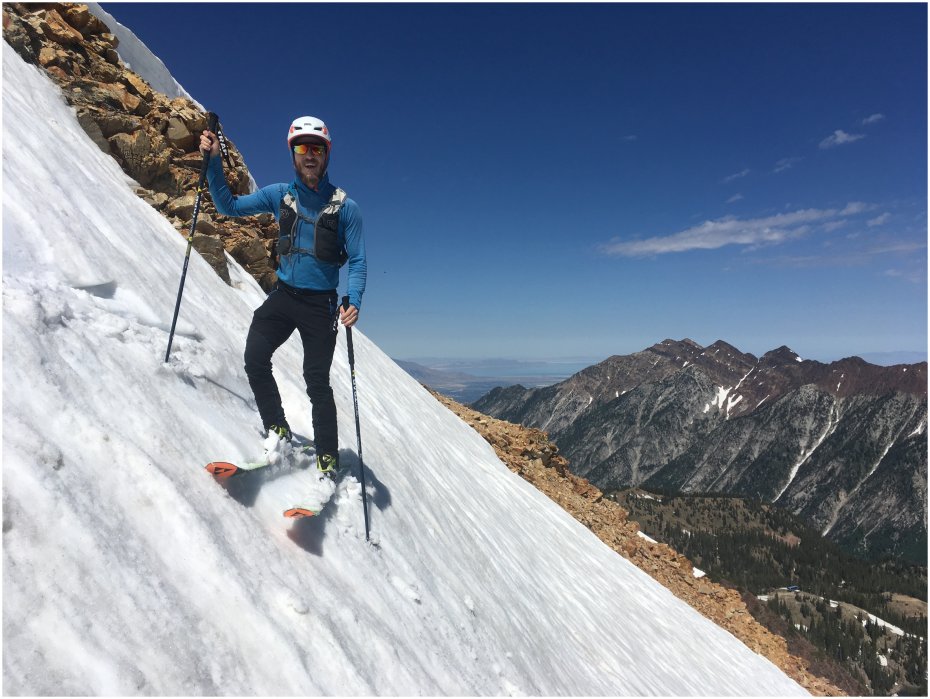
Teddy using the Aerospeed glasses to manage the summer sun/shade transitions on Pipeline Chute.
“Julbo Aerospeed glasses are quite a look, and can offer major versatility in the mountains if you are willing to commit to the aesthetic! With huge lenses, you get protection from sun, snow, and impact, all while retaining the ventilation needed to wear them on the up. Because these frames give you most of what you get from goggles, you can get away with leaving those at home on most days. That means you save weight and volume in your pack, and time during transitions. Coming from more of a climbing and mountaineering background, I want great performance out of my gear under all conditions that the mountains can throw at me, and I don’t ever want to have to tote around extra kit. The AeroSpeed glasses are the perfect minimalist eyewear for winter in the mountains.”
Skier: Julieana Rusnak // Sales staff, Freeride World Tour competitor, resident small person
Essential Kit: Mammut Ultralight Airbag and Petzl Irvis Hybrid Crampon
"Selecting an airbag pack is a little tricky, and every skier comes to the process with different demands. For me, skiing in Freeride World Tour qualifiers, I look to the competition rules to see what’s required. Most European competitions require athletes to wear airbags, but airbags are often heavy and bulky, which can make jumping, spinning, and flipping -- all things you might need to do in an FWT comp -- a little harder. For my usage, the best airbag pack on the market is the Mammut Ultralight, which comes in at a svelte 1940 grams ready to deploy -- not only will it save you some weight on the tour up to your intended line, but it also won’t be a distraction or throw off your balance when descending. A lightweight airbag pack is useful for more than just the FWT, however. If you're a frequent chairlift user accessing high-consequence terrain through resort gates -- say, at Jackson Hole, Alta/Snowbird, or in Canada and Europe -- the Ultralight will make it easy for you to have an airbag at the ready without hauling around a full backcountry pack for inbounds runs. In technical terrain that requires mountaineering skills and equipment, the Mammut Ultralight has several options to attach gear, such as ropes, harnesses, quickdraws, and ice screws. For those that are consistently pushing into terrain where an extra margin of safety is needed, but don’t want to sacrifice speed on the up or maneuverability on the down, this pack is absolutely perfect."
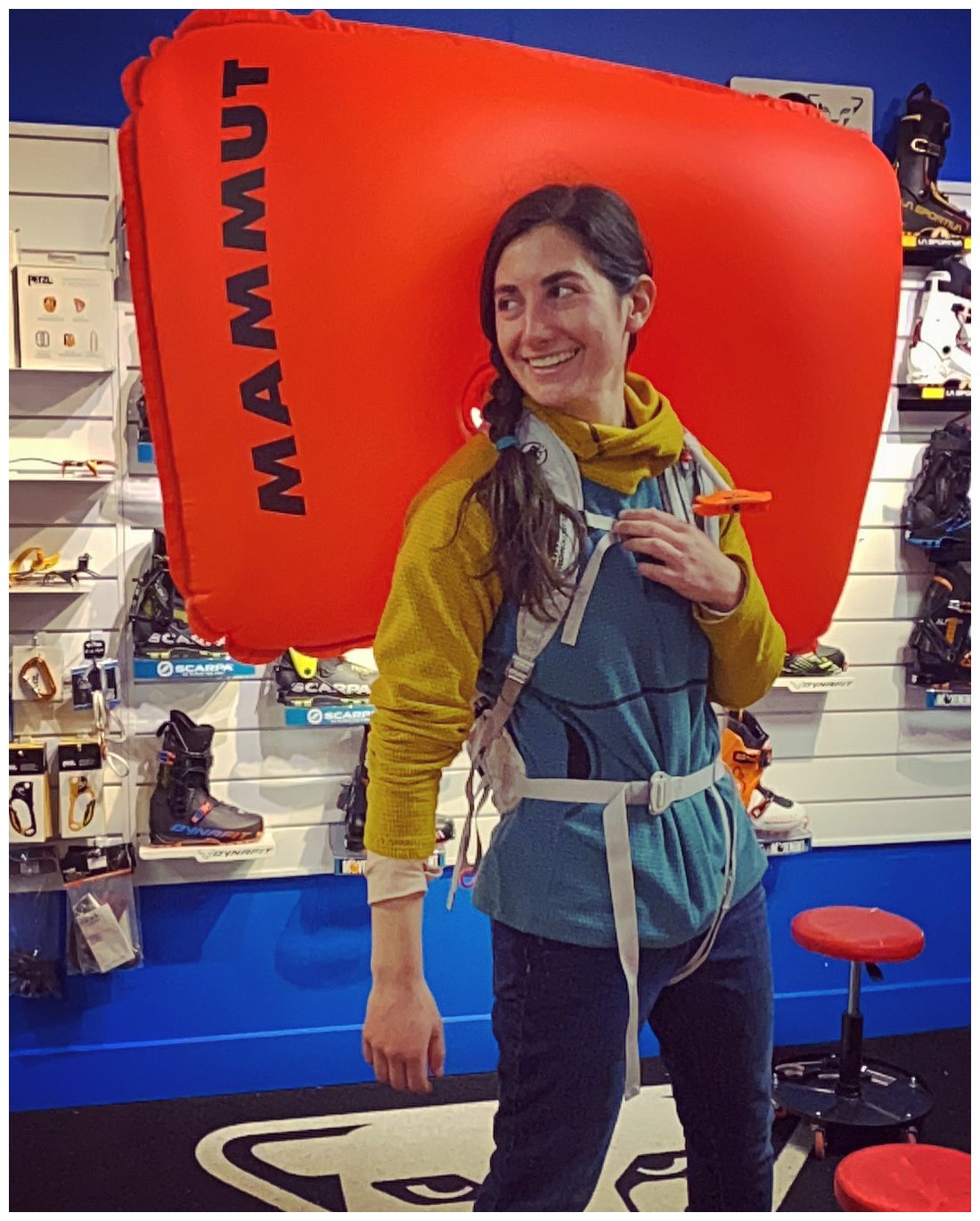
Smiling because carrying an airbag doesn't have to mean slowing down.
"Speaking of technical terrain, the Petzl Irvis Hybrid crampon is the perfect mix of packable, light, and aggressive. It has a steel toe to help with confidence in steep terrain and front-pointing situations, but an aluminum heel to save some weight. I personally love the cord attachment -- it makes the Irvis Hybrid really easy to adjust sizes, and if you have to do it on the fly, it isn’t an issue. Plus, the cordage makes them extremely packable compared with a traditional metal bar as well. For worst-case scenarios, I always carry extra cord lengths with me, so if it were to break, it would be a simple fix in the field. I love having a sub-300-gram, yet extremely user-friendly crampon in my pack just in case I need to use it."
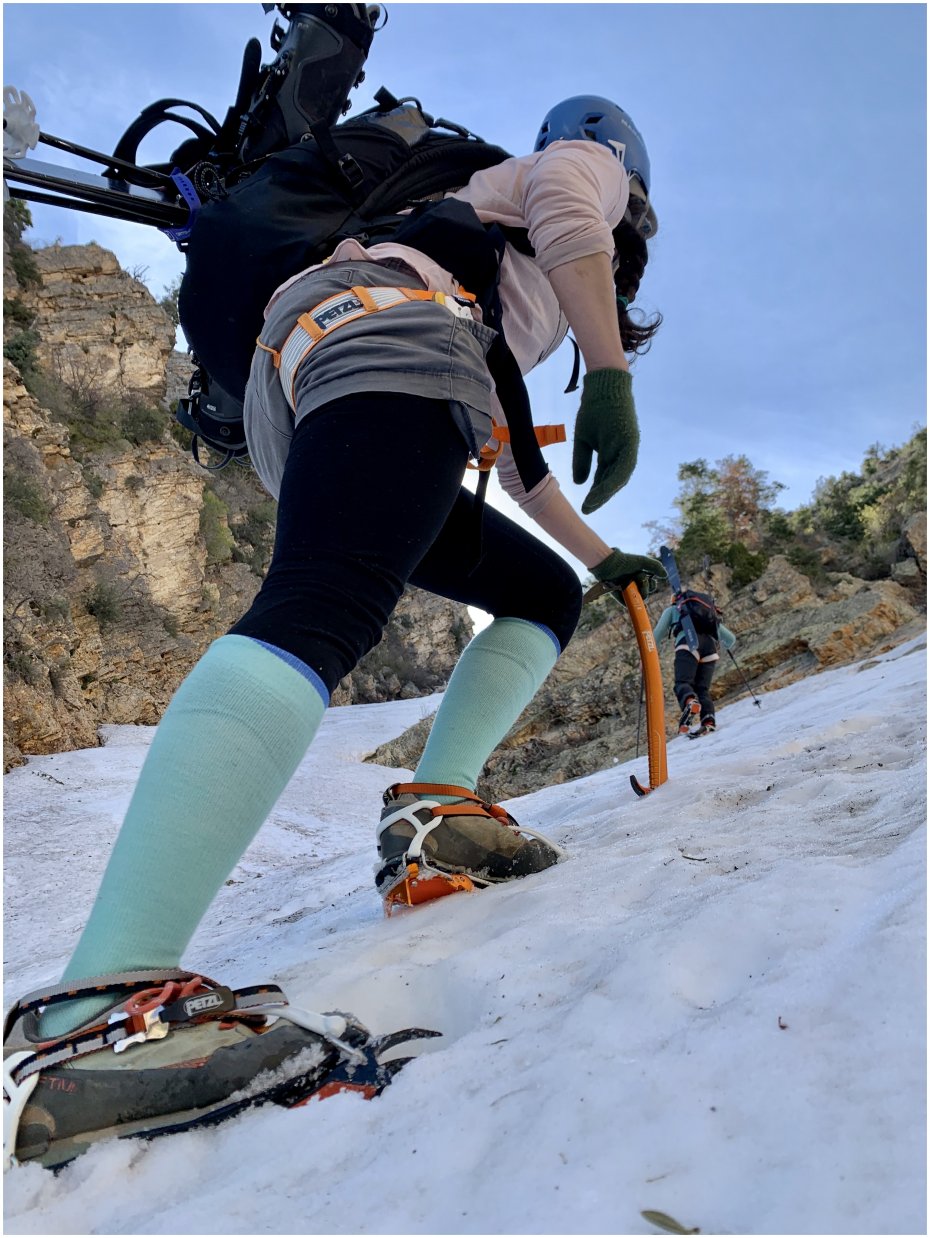
The Irvis Hybrid is ideal for use on ski boots as well as approach shoes -- as demonstrated here in the Apollo Couloir on Mt. Olympus.
Skier: Jason Borro // SkimoCo bossman, Chuting Gallerist, Light 'n Fast devotee
Essential Kit: Mammut Wall Rider MIPS Helmet
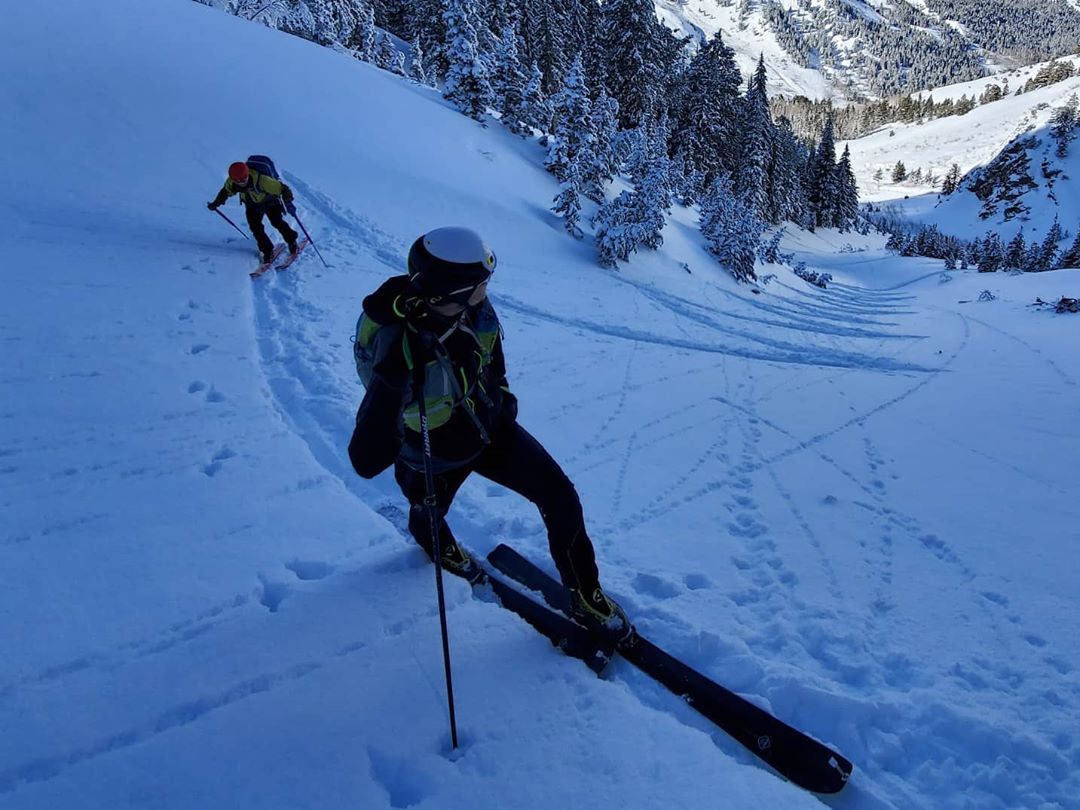
JBo appreciates quality head protection and making kickturns in couloirs.
"Last spring, while on a ski mountaineering trip to Colorado, I watched a grapefruit-sized rock whizz past my head while descending a couloir. It’s reflecting on scary moments like this that I like the idea of the new safety technology in the Mammut Wall Rider MIPS helmet for the spring season, when the mountains start to open up and rocks start to fall. I put “technology” in quotes because it’s really just a sheet of plastic, but placed strategically in order to reduce the rotational force on your head/neck in the event of a crash or collision with a falling object. The fact that it borrowed the Petzl Sirocco’s half-cap design is a bonus for weight, durability, and ventilation. The neutral colors and a snug, non-bulbous fit (on my head, anyway) are a bonus to those who have to look at me."
Skier: Scott Berkley // Online customer service, third-string skimo racer
Essential Kit: Ski Trab Gara Evo, CAMP G Comp Race/Warm gloves
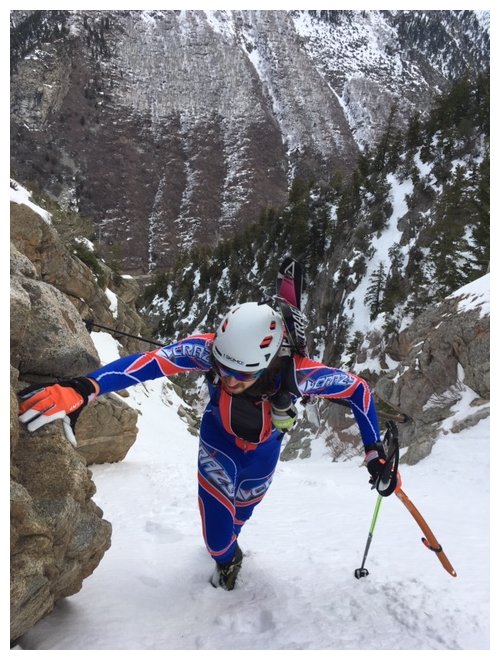
When it's 40 degrees at the base of the Y Couloir and 15 degrees at the top, the CAMP G Comp Race is the perfect glove.
“With races like the Wasatch Powder Keg and Big Sky, Montana’s Shedhorn on the horizon, I focused on getting my race-day accessories dialed in during the early season this year. One of the toughest things for me has been finding a pair of gloves that has enough dexterity for powerful poling and fast transitions, but also can warm my hands up on windy ridges. My two favorite pairs are the CAMP G Comp Race and Ski Trab Gara Evo gloves. The super-light, warm-condition-specific G Comps have an extra-sticky palm to make the contact between your gloves and your pole handles stronger, and they’ve never given me sweaty palms, even during a marathon late-spring tour at Snoqualmie Pass. No more “on-again, off-again” with ski gloves! The Gara Evos provide more warmth and a thicker insulating layer, making them perfect for high-wind days and colder midwinter tours. During the Shedhorn race, not even 50mph wind gusts and slow progress down the Three Forks Couloir could numb my hands in the Gara Evos. Both the CAMP and Ski Trab gloves have stowable "over-mitts" that are windproof and hold in plenty of heat during long ridge scrambles and descents without adding weight or adding time to your transitions. I also bring a pair of CAMP G Comp Warm gloves for backup during training days -- a glove I’d happily take out for a dawn patrol on a day when it’s -10 at the trailhead."
Comments
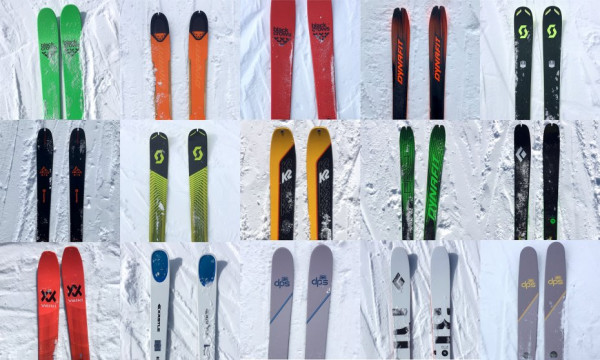
10/1/2020
2020/21 Season Preview
